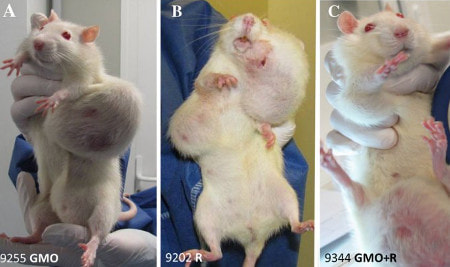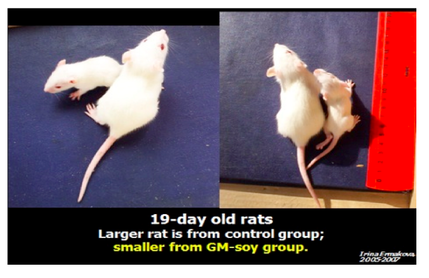AVOIDING GMO FOOD IN OC
Is your food the real deal? Or is it a genetically modified food (GMO)? One is made by Mother Nature, and the other is made by a scientist in a lab. In this blog we’ll cover the health risks of consuming genetically modified foods and how to easily spot and avoid them in the real world.
Let’s get started.

With genetically modified food, there are basically two things you have to be worried about when it comes to your health and appearance.
- The actual genetic modification of the food.
- The chemicals used to grow the genetically modified food.
Genetic Modification of Food:
Simplified, genetic modification is when a scientist takes a gene from one plant and, by unnatural and scientific means, embeds it into another plant. Once again, GMOs can only be made in the laboratory. This will never occur in nature. Let us take a look at some research and see what kind of health effects this type of unnatural gene manipulation can have.
-In 1998, the FDA disclosed 44,000 documents demonstrating, according to FDA researchers, that GMOs could contribute to infertility, accelerated aging, immune dysfunction, and changes in the gastrointestinal system. (1)
-Another study from the 1990s was conducted on GMO corn. Rats fed GMO potatoes experienced damage to the gut, tumor growths, and damage to the immune system. This study went through six separate rounds of peer-review before being published.(2)

-In 2009, the American Academy of Environmental Medicine concluded that GMOs pose a serious health problem and urged doctors nationwide to prescribe GMO-free diets to their patients. (3)
-A study that fed rats GMO tomatoes showed that rats developed stomach lesions, and 7 of the 40 rats died within 2 weeks. (4)
-A study published in The Journal of Applied Toxicology reported that GMO corn creates holes and leakage in human cells. (5)
-In 2013, a study was published in the Journal of Hematology & Thromboembolic Diseases. This study fed GMOs to mice and found that the mice experienced damage to their red blood cells. (6)
-Irina Ermakova, a scientist at the Institute of Higher Nervous Activity and Neurophysiology, fed nursing rats GMO soy. What did she find out? Mothers fed GMO soy gave birth to smaller rats. 3 weeks after birth, 25 of the 45 rats died, as compared to 3 of 44 in a non-GMO soy control group. That’s pretty scary. (7)

-A Canadian study done in 2011, found out that a toxic protein in the specific GMO tested was also found in the cord blood of fetuses and the blood of mothers who consumed the GMOs. This is an important finding that demonstrates that the toxins from GMOs do in fact pass onto the consumer that eats them. (8)
Chemicals used to grow genetically-modified food:
The second danger of eating GMOs is that all GMO crops are grown with a harmful synthetic herbicide called Roundup. The main ingredient in Roundup is a chemical called Glyphosate. Let’s see what health organizations around the world and guys with the Phds have to say about that chemical:
-In 2017, California listed glyphosate under Proposition 65 as a cancer-causing agent.

-In 2015, The World Health Organization cancer authorities – the International Agency for Research on Cancer (IARC), through a year-long study, determined glyphosate to be “probably carcinogenic to humans”.
-A study done in 2013 showed that even small exposure to glyphosate destroyed gut bacteria in chickens. Why does gut bacteria matter to a living organism? Well, it actually matters a great deal. If you don’t have healthy gut bacteria, your stomach won’t be able to digest and properly absorb nutrients from the food you eat. This in turn will produce nutrient deficiencies, which will lead to myriad immune system disorders and other health problems. (9)
-To reinforce the idea further, another study showed that consuming foods containing glyphosate residue, over time, caused chronic inflammation. This leads to a numerous disorders such as gastrointestinal disorders, obesity, diabetes, kidney failure, autism, immune system failure, and multiple cancers. (10)
-And yet another study in 2012 proves glyphosate to be a hormone disruptor, decreasing testosterone in rats. (11)
-Could glysphosate possibly cause birth defects? It looks like it. A study published in Environmental and Analytical Toxicology found that pigs fed GMO corn gave birth to piglets with deformities. (12)
-How about chronic illness? Well, a study published in Environmental and Analytical Toxicology found a fairly convincing correlation between chronic illness and levels of glyphosate found in patients’ blood. (13)
-Even way back in 1985, the Enviromental Protections Agency classified glyphosate as a possible cancer-causing agent. (14)
How about the nutritional profile of GMO crops? Are they more nutritious than organic crops?
-GMO crops are nutritionally inferior AND toxic. One study showed that market-ready GMO soy had LESS total protein, less zinc, more saturated fat and a poor Omega 3-to-Omega 6 balance. GMO soy also contained high residues of the cancer-causing chemical glyphosate – as discussed above. (15)
-Also important to consider is the fact that farmers spray 2 to 5 times more glyphosate on GMO crops compared to conventionally grown crops. This increases the toxic load of a genetically-modified food group by A LOT, on top of destroying the mineral composition of the soil. So there is a cluster of negative events happening here:
1) You’re getting toxic residue directly on the surface of the produce you eat
2) Since this synthetic herbicide finds its way into the soil, it is then absorbed by the roots of the produce being grown in that specific field. So now, not only is glyphosate residue found on the surface of the produce, it is also found within the produce. And you cannot wash that off. It’s inside the crop.
3)Because glyphosate is such a harsh and toxic synthetic herbicide, the mineral content of the soil is depleted. Without mineral-rich soil, the plant roots can’t extract the minerals THEY need to produce nutritionally dense food. Thus, you’re getting food of a nutritionally inferior quality. Not only are you getting less nutrients, you’re also being poisoned. (16)
So how do I avoid GMOS?
Well, on the surface, it seems pretty easy to avoid GMOS. Basically, you want to avoid CORN, SOY, CANOLA, and COTTON. If you avoid those food groups, your exposure to GMOS will be almost ZERO. HOWEVER, and this is a BIG HOWEVER, GMOS have found their way into almost everything in the Western diet. Check out this video and don’t ever be fooled again.



























































































